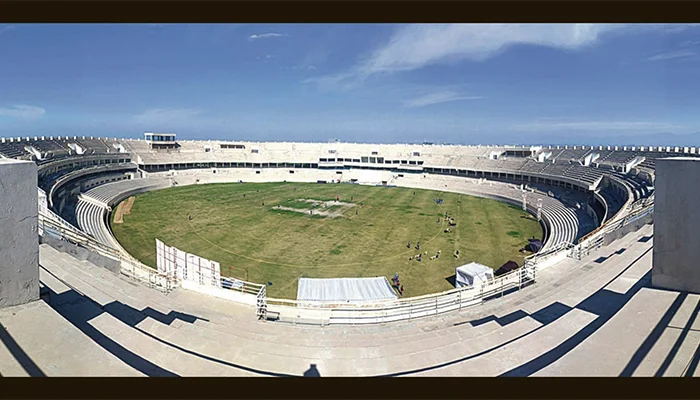Maharaja Yadavindra Singh International Cricket Stadium IPL 2024

With a new IPL season starting, the Punjab Kings team have also given a surprise to the fans as they will be having a new home ground which is Maharaja Yadavindra Singh International Cricket Stadium, Mullanpur which will be hosting all of their home games in the 2024 IPL season. Earlier the team used to play their home matches at PCA IS Bindra Stadium, but now the team has got a new stadium and it will be the major venue for them.
Being the home of Punjab Kings, the Maharaja Yadavindra Singh International Cricket Stadium, Mullanpur situated in Chandigarh will be having a big task of making sure that the Punjab Kings supporters get enough seats and the facilities during the whole IPL season.
About the stadium
The Maharaja Yadavindra Singh International Cricket Stadium, located in Mullanpur, Mohali, Punjab, stands as a testament to the Punjab Cricket Association's commitment to world-class facilities. In March 2010, the association unveiled plans for this international-standard cricket stadium, sprawling across 41.95 acres and carrying a budget of Rs 230 crore (US$29 million). This state-of-the-art venue has since become a cricketing hub, hosting domestic and international matches and with its modern infrastructure and picturesque surroundings, the stadium not only serves as a battleground for thrilling cricket contests but also symbolizes the region's dedication to fostering the sport's growth.
|
Location |
Tira, Punjab |
|
Establishment |
2021 |
|
Capacity |
38,000 |
|
Owner |
Punjab Cricket Association |
|
Operator |
Punjab Cricket Association |
|
Tenants |
Punjab cricket team (2021-present) Indian cricket team (2021-present) |
Nestled in Mullanpur, the cricket stadium is a marvel with its swift drainage system clearing rainwater within 25-30 minutes. What sets it apart is the use of sand instead of traditional soil, ensuring stability through demanding in upkeep. Player amenities are top-notch, featuring two international-standard dressing rooms equipped with steam, sauna, and ice bath facilities. The icing on the cake is a world-class gym within the complex. Notably, the new stadium is conveniently located around 13 kilometres from its predecessor, creating a modern cricketing hub with advanced features, offering both players and fans an elevated experience in a serene environment.
Ground Dimensions & Pitch Conditions
The Maharaja Yadavindra Singh International Cricket Stadium, Mullanpur has got the capacity of 33,000 spectators which allows them to have an amazing evening while supporting their favourite team. However, the dimensions of the ground are still yet to be known as it will be making its debut in the match against Delhi Capitals on 23rd March 2024.
Regarding the pitch, officials have indicated its design to be favourably inclined towards batsmen, ensuring a conducive environment for effective batting performances. Emphasizing a batsman-friendly approach, the pitch aims to provide an advantageous setting, allowing batters to capitalize on their skills.
Home Team
For the Punjab Kings team, the Maharaja Yadavindra Singh International Cricket Stadium, Mullanpur has now become their new venue for all the home matches that will be played this year. Earlier, the team used to get all of their home matches at the PCA IS Bindra Stadium. Now, the venue will be getting its first match in this season as it hasn’t even hosted any international game also.
In the Inderjit Singh Bindra Stadium, the Punjab Kings boast a record of 31 victories and 27 defeats in the 58 matches played. This cricketing battleground has witnessed both triumphs and challenges for the team, creating a history marked by thrilling encounters.

Comments
Sign up or log in to your account to leave comments and reactions
0 Comments